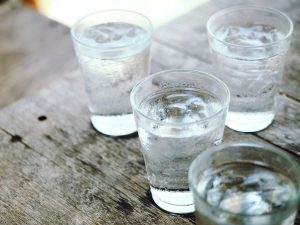THIRST MEANS YOU’RE DEHYDRATED!
The sensation of thirst starts to dull and become less noticeable as we age. Dehydration triggers the body’s thirst response. When you feel thirsty, dehydration is already setting in.
MISCONCEPTIONS OF WATER INTAKE:
Many seniors struggle with incontinence issues. A common misconception is that drinking more fluids will lead to more frequent urges and make the issue worse. Lessening fluid intake can make incontinence worse and it can also result in DEHYDRATION for seniors. You should not restrict your fluid intake when dealing with urinary incontinence.
SYMPTOMS OF DEHYDRATION
▪ Lethargy, confusion or weakness
▪ Irritability
▪ Diarrhea and vomiting
▪ Excessive perspiration
▪ Fever
▪ Dizziness
▪ Headache
▪ Darker colored urine
▪ Increase in heart rate
▪ Lower blood pressure
▪ Sunken eyeballs
▪ Less frequent urination
▪ Constipation
WHY DO ELDERLY HAVE A GREATER RISK OF DEHYDRATION?
Reduced sense of thirst with age
Only offered fluids at meals
Reduced ability to see or reach for fluids
Reliance on others to provide fluids
Being in rooms that are overly heated
Dementia that results in forgetting to drink
Wanting to drink less because of incontinence or reducing the number of visits to the bathroom
Oral and swallowing problems and the need for thickened fluids
When the range of fluids available is limited and does not match a person’s food and fluid preferences
Daunting idea of drinking lots of fluids at one time
HOW TO HELP
Water and healthy drinks should be available to the elderly at all times. They should be encouraged to consume them throughout the day. A key to staying sufficiently hydrated is to balance smaller amounts of fluids throughout the day. It is not advisable to consume significant amounts all at once.
• Have fluid within reach day and night
• Offer small amounts of fluid more often, rather than larger amounts less often
• Be aware of feeding difficulties and provide fluids appropriately, e.g. with a straw, in a special cup, or a squeeze bottle. Even soup may be better offered in a mug for residents who find using a spoon difficult
• Provide fluids at the temperature that residents prefer
• Encourage family and friends to drink fluids socially with the resident
• Provide fluids that residents prefer, e.g. if a resident doesn’t like water, offer alternatives like weak cordial or flavored water with lemon slices or mint leaves
• Have fluids available during activities
• Offer a wide range of beverages, especially for elders on thickened fluids
• Remember: those requiring thickened fluids are at high risk of dehydration. Be patient and persistent in encouraging fluid intake. Provide extra fluids between meals according to a set fluid schedule — e.g. three times a day or every 1.5 hours. In Aged Care Facilities, you may want to assign a staff member to carry out the “hydration round”
• Offer high fluid foods, e.g. fruit (whole or pureed), soup, jelly, custard, yogurt, ice-cream, ice blocks (especially popular in hot weather), and ice chips
• Be direct when offering fluids, e.g. instead of asking “Do you want to have a drink?” This question allows a choice not to drink. It may be better to say “I would like you to have a drink of water with me” or “let’s have a drink of water together”

